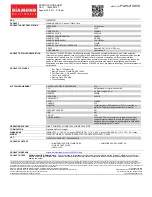
Chapter 7
The Big Picture: A Short History of World War II
151
Problems of Supply
Both the Allies and Germans labor
under supply problems during the
Normandy Campaign. However,
the German problems are much
more acute. One problem the
Germans face is dividing men,
machines, and materiel between
three fronts
Russia, Italy, and
Normandy. Another is the system-
atic destruction of the German
industrial base by Allied bombing.
The most immediate problem in
supplying the German forces in
Normandy is Allied air superiority.
Throughout the Normandy
Campaign, columns of reinforce-
ments and supplies are ravaged
from the air; troop movements
which should take one day stretch
to three or four because of a lack
of motor transport, damaged
railroads, and constant air attacks.
way up and over mountains, hills, and ridges. When the
Germans do withdraw they do so in an orderly
manner
there are no panicked mobs fleeing the front.
Bridges are blown, mines sown, and booby traps rigged;
the Germans do everything that can be done to slow the
Allied advance.
On November 5 the Fifth Army begins attacking one of the
Germans’ intermediate defensive lines. The XIV
Panzer
Corps makes a brilliant stand, using the terrain and bad
weather to maximum advantage, stalling the American
advance. Attacks and counterattacks rage in the mountains.
Still, the Allies slowly grind their way forward.
Then, as experienced units are pulled out of the line and sent
to England to prepare for Operation Overlord, the advance
begins to slow. By the end of 1943, both Allied armies find
themselves bogged down by determined German defense
and winter rain.
Despite the Allied advances since the September landings
and heavy losses on both sides, the Germans remain ready
and able to fight. None of their forces have been mauled, the
terrain favors the defender in Italy, and the Germans use the
terrain very well.
On To Rome
The fighting in Italy plays an important strategic role in the European Theater; it
holds down a large number of German forces
forces that cannot be shifted to
France. There are tactical lessons as well. The Allies learn more about amphibious
landings. They learn more about German tactics: the use of strongpoints, infiltra-
tion and counterattack and, in the face of a superior force, the fighting withdrawal.
They also discover that, even in the most dire circumstances, the Germans never
break and run.
With Field Marshal Albrecht Kesselring’s Tenth Army strongly entrenched behind
the Gustav Line, the Allies face the prospect of attacking straight into the teeth of
the German defense. There are changes in the Allied command structure as both
Eisenhower and Montgomery leave to take their positions in Operation Overlord.
Alexander takes overall command; his plan calls for the Fifth Army to smash
through the German defenses into the River Liri valley and then move on Rome.
The plan also calls for another landing
this time near Anzio
from which there
will be a quick drive for Rome. With an Allied force behind them, Alexander
believes the Germans will be compelled to fall back.
Содержание Close Combat
Страница 57: ...56 Close Combat ...
Страница 163: ...162 Close Combat ...












































